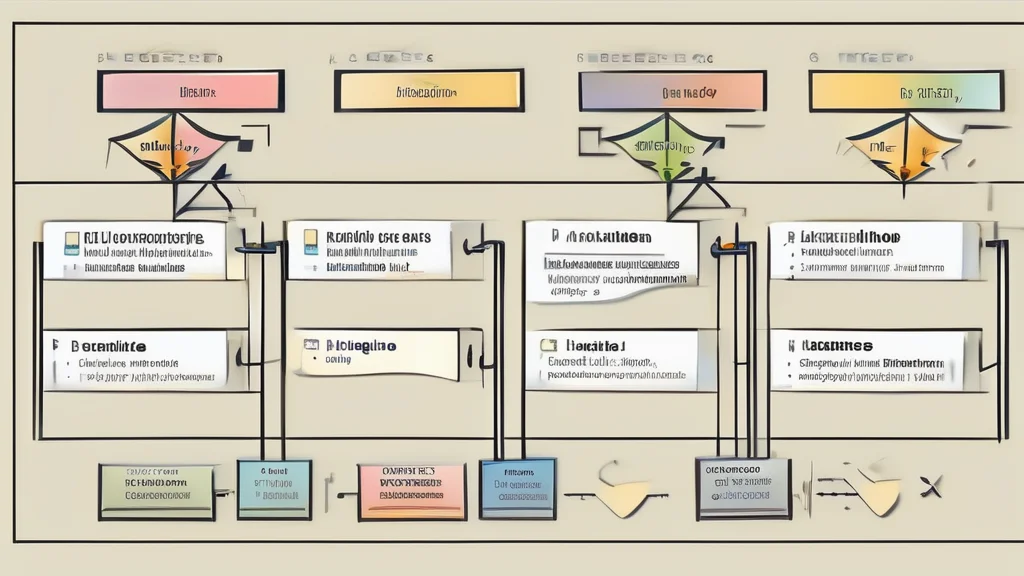Type-Level Programming for Safer Resource Management
Harnessing Haskell's Type System for Safer Code

- Understand type-level programming in Haskell.
- Explore a type-safe database API example.
- Learn how to prevent common transaction errors.
- Address limitations of type-level programming.
- Enhance API ergonomics with wrapper functions.
In the realm of software development, particularly in languages like Haskell, type-level programming offers a promising approach to ensuring safer resource management. By leveraging the power of type systems, developers can enforce correct usage patterns at compile time, thereby reducing runtime errors and enhancing code reliability. This technique is particularly useful in scenarios involving transactions, locking mechanisms, and memory management. In this article, we delve into the intricacies of type-level programming in Haskell, examining its benefits, limitations, and potential applications.
Understanding Type-Level Programming
Type-level programming involves using types to encode certain properties or invariants of your program, which can then be checked by the compiler. In Haskell, this is often achieved using features like type classes, GADTs (Generalized Algebraic Data Types), and type families. The key idea is to shift some aspects of program correctness from runtime to compile time.
Consider a database API that manages transactions. The API uses a type parameter to track the level of nested transactions. Initially, the database is opened at level 0, and it can only be closed when the transaction level returns to 0. This approach ensures that all transactions are properly committed before the database is closed, preventing potential data inconsistencies.
Example API in Haskell
Let’s look at a simplified example in Haskell:
{-# LANGUAGE DataKinds #-}
import GHC.TypeLits
data DbHandle n
openDatabase :: IO (DbHandle 0)
startTransaction :: DbHandle n -> IO (DbHandle (n + 1))
commitTransaction :: DbHandle n -> IO (DbHandle (n - 1))
closeDatabase :: DbHandle 0 -> IO ()In this API, a phantom type parameter n in DbHandle n tracks the transaction level. The openDatabase function initializes the database at level 0. Each call to startTransaction increments the transaction level, while commitTransaction decrements it. The closeDatabase function ensures that the database can only be closed when the transaction level is back to 0.
Preventing Common Errors
This type-level approach effectively prevents certain common errors. For instance, attempting to close the database while there are uncommitted transactions results in a compile-time error, as the compiler can detect that the transaction level is not zero. Similarly, trying to commit a transaction when none is in progress also triggers a compile-time error.
Here’s an example of a type error when failing to commit a transaction:
ExampleX.hs:21:9: error: [GHC-83865] • Couldn't match type ‘1’ with ‘0’ Expected: DbHandle 0 -> IO (DbHandle 0) Actual: DbHandle 0 -> IO (DbHandle (0 + 1))This error message indicates that the transaction level was not zero, thus preventing the program from compiling.
Addressing Limitations
While type-level programming in Haskell offers significant advantages, it is not without its challenges. One limitation arises from the lack of true inductive types in GHC’s type-level naturals, which can lead to situations where subtraction is allowed even when the result is negative. To address this, constraints can be added to functions to ensure they can only be applied to valid handles.
For example, adding a constraint to commitTransaction ensures it can only be applied when there is an active transaction:
commitTransaction :: (1 <= n) => DbHandle n -> IO (DbHandle (n - 1))Enhancing Ergonomics with Wrapper Functions
To further enhance the API’s usability, wrapper functions can be introduced to handle the bookkeeping involved in managing transactions. A withTransaction function can encapsulate the process of starting and committing transactions, ensuring that resources are managed symmetrically.
withTransaction :: DbHandle n -> (forall m. DbHandle m -> IO a) -> IO a
withTransaction db k = do
db' <- startTransaction db
r <- k db'
commitTransaction db'
pure rThis approach not only simplifies the code but also reduces the likelihood of errors by automating the transaction management process.
Future Directions and Considerations
While the current implementation of type-level programming in Haskell is powerful, there is room for improvement. Future enhancements could include better support for inductive reasoning at the type level, which would alleviate some of the current limitations. Additionally, exploring the use of sum types to handle special operations, such as rollbacks, could make the API more robust.
For example, a TransactionResult type could be introduced to allow user code to request specific operations:
data TransactionResult a = Rollback | Commit a
withTransaction :: (1 <= n + 1) => DbHandle n -> (forall m. (1 <= m + 1) => DbHandle m -> TransactionResult a) -> IO (TransactionResult a)
withTransaction db k = do
db' <- startTransaction db
r <- k db'
case r of
Rollback -> rollback db' $> r
Commit _ -> pure rConclusion
Type-level programming in Haskell presents a compelling approach to safer resource management. By enforcing correct usage patterns at compile time, developers can prevent common errors and improve code reliability. While there are challenges and limitations, the potential benefits make it a worthwhile pursuit for developers seeking to enhance the safety and correctness of their code.
As the field of type-level programming continues to evolve, it will be interesting to see how these techniques are further refined and applied in real-world scenarios. For now, developers can leverage the existing tools and techniques to build safer, more reliable software systems.
Call to Action
Are you ready to explore the world of type-level programming in Haskell? Dive into the code examples provided and start experimenting with your own implementations. Share your results and experiences with the community to help advance the state of type-level programming.